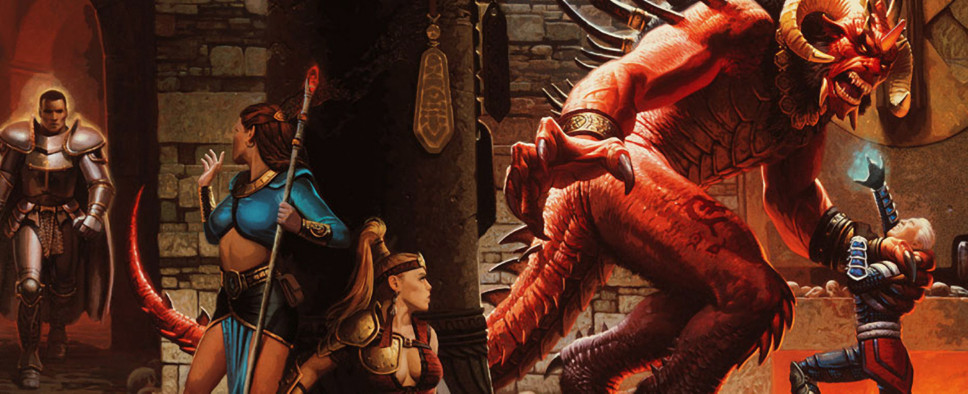Diablo II Retrospective - Page 2
-
Category: EditorialsHits: 9189

Article Index
And while this overall sense of danger, paired with the game’s stylized visuals that honestly look pretty nice even today, is a big part of what makes Diablo II’s atmosphere work, its audio is perhaps an even bigger contributor to what makes it stand out.
Composed by Matt Uelmen, the game’s soundtrack is simply phenomenal. The voice acting is also way ahead of its time. But even the game’s miscellaneous sound effects that play while you’re tinkering with the menus and engaging in some inventory Tetris are exceedingly crisp and memorable.
Even more impressive here is the fact that Blizzard North wasn’t working with some established blueprint. They were pretty much creating this genre from the ground up, and it’s a real testament to their skills that a lot of Diablo II’s systems remain the gold standard even to this day.
On the flip side, this absence of an established template means that the game can feel a bit wild and disjointed, especially when we look at it through the lens of our modern sensibilities.
Take character progression for example. I think at this point, pretty much everyone knows that David Brevik came up with Diablo II’s skill trees in the shower. And while that game wasn’t the first to ever have skill (or rather tech) trees, it was the one to popularize them as an RPG thing. In fact, these days, you’ll be hard-pressed to find a video game that doesn’t have at least some “RPG elements,” which more often than not just means skill trees.
However, Diablo II’s attributes weren’t nearly as impactful. And truth be told, they serve very little purpose, since pretty much every build in existence advises you to pump Strength and Dexterity until you can wear your desired gear, then put everything else in Vitality while ignoring Energy altogether.
The rest of the game follows the same formula, where some of its features are mighty handy while others are completely superfluous. As a result, we have a button that highlights loot and the ability to remap keys (something certain games don’t let you do even today), but then, there’s also stuff like Stamina that has no real reason to exist.
Then, there’s also some stuff that can only be seen as a quaint remnant of a long-lost age where game development was much less of an exact science. I’m talking about things like the day-night cycle. If you think about it, Diablo II doesn’t need a day-night cycle. It’s a complete waste of resources. But I firmly believe it exists solely because some developer thought it would be cool to have it. And I wholeheartedly agree. It is cool to have it.
Another thing that doesn’t get nearly enough credit in my opinion, is the game’s narrative side. It’s very easy to ignore the story in an action-RPG, but if you follow Deckard Cain’s advice and spend some time listening, you’ll be treated to plenty of engaging lore painting a grand picture of this battle between Heaven and Hell with humans caught in-between.
Playing through Diablo II for the purposes of this retrospective, it struck me how similar its narrative style is to something like Dark Souls, where you’re thrown into a dying fantasy world barely holding on for dear life. Should you decide to learn more about it, you'll need to chat up a bunch of NPCs who never have the full picture and just feed you a few dialogue lines at a time. Or, you can just ignore all of that and go bash some skeletons. It’s your choice. And seeing how both series share some other surface-level similarities, like strong but brittle crystal weapons, I honestly wouldn’t be surprised if Diablo was among the inspirations for Dark Souls. Unfortunately, I wasn’t able to confirm this theory and it’ll have to remain just that.

